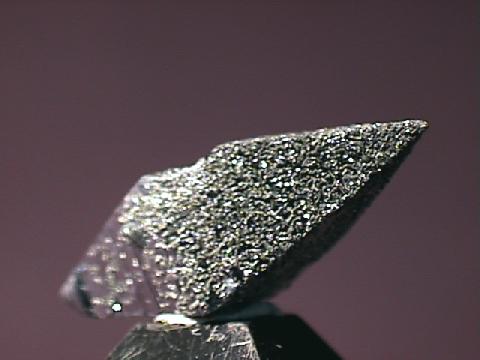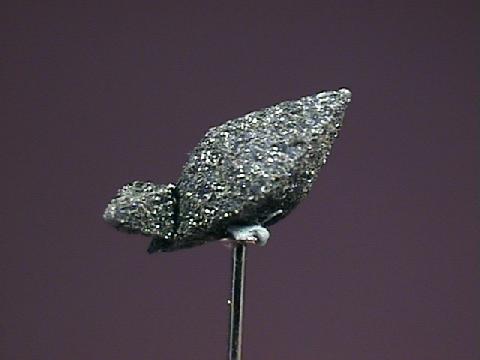 THE MINERAL ANATASE
THE MINERAL ANATASE
- Chemical Formula: TiO2, Titanium Oxide
- Class: Oxides and Hydroxides
- Uses: A very minor ore of titanium and as mineral specimens.
Specimens
Anatase and rutile have the same symmetry, tetragonal 4/m 2/m 2/m, despite having different structures. In Rutile, the structure is based on octahedrons of titanium oxide which share two edges of the octahedron with other octahedrons and form chains. It is the chains themselves which are arranged into a four-fold symmetry. In anatase, the octahedrons share four edges hence the four fold axis.
Crystals of anatase are very distinctive and are not easily confused with any other mineral. They form the eight faced tetragonal dipyramids that come to sharp elongated points. The elongation is pronounced enough to distinguish this crystal form from octahedral crystals, but there is a similarity. In fact anatase is wrongly called "octahedrite" in spite of the difference in forms. Of course "tetragonal dipyramidite" does not sound right either!
Nice specimens of anatase are associated with quartz and are considered classics in the mineral world. The good luster, well formed crystal shape and interesting character make anatase a popular mineral for collectors.
PHYSICAL CHARACTERISTICS:
- Color is brown to black, also yellow and blue.
- Luster is adamantine to submetallic.
- Transparency crystals are opaque.
- Crystal System is tetragonal; 4/m 2/m 2/m
- Crystal Habits include the typical tetragonal dipyramids that come to sharp elongated terminations points. These crystals look like stretched out octahedrons.
- Cleavage is perfect in the basal direction and in four directions, pyramidal.
- Fracture is subconchoidal.
- Hardness is 5.5 - 6
- Specific Gravity is 3.8 - 3.9 (average for metallic minerals)
- Streak is white.
- Other Characteristics: Crystals are easily altered in nature and sometimes pitted.
- Associated Minerals include brookite, rutile, quartz, feldspars, apatite, hematite, chlorite, micas, calcite and sphene.
- Notable Occurrences include Somerville, Massachusetts and Gunnison Co., Colorado, USA; Tavistock, Devon, England; Austria; Diamantina District, Brazil; in the French Alps and at the Binnatal area of Switzerland.
- Best Field Indicators are crystal habit, luster, cleavage, density, streak, associations and locality.
















